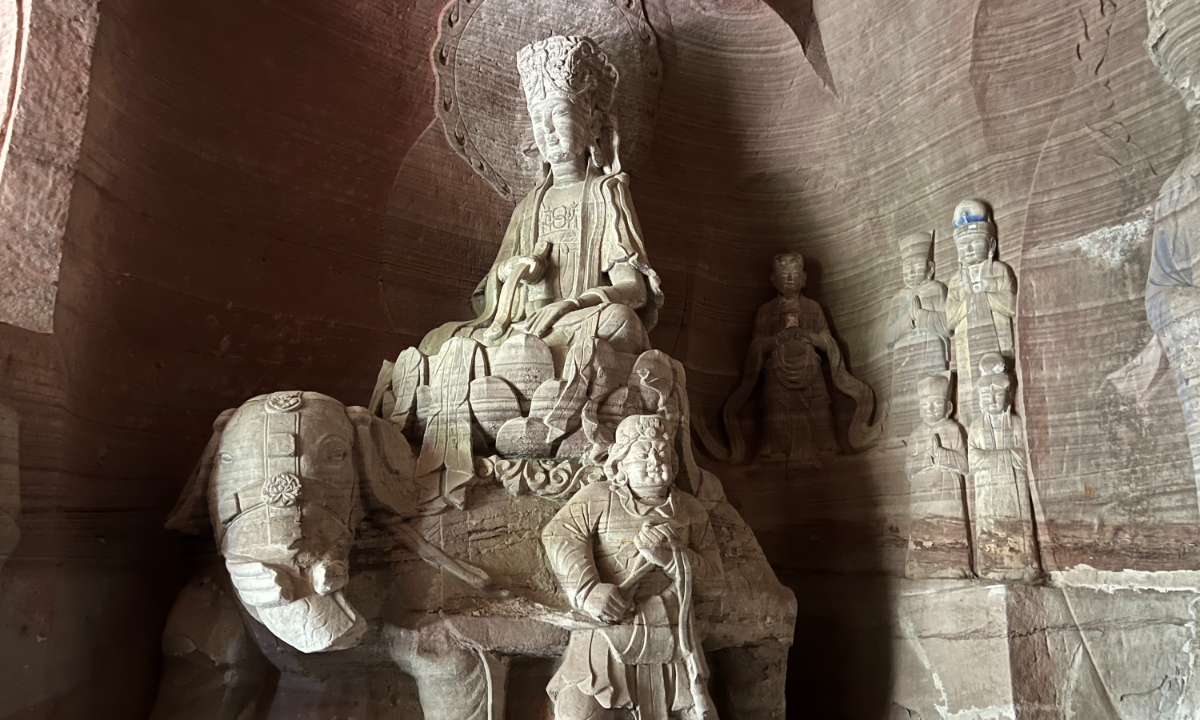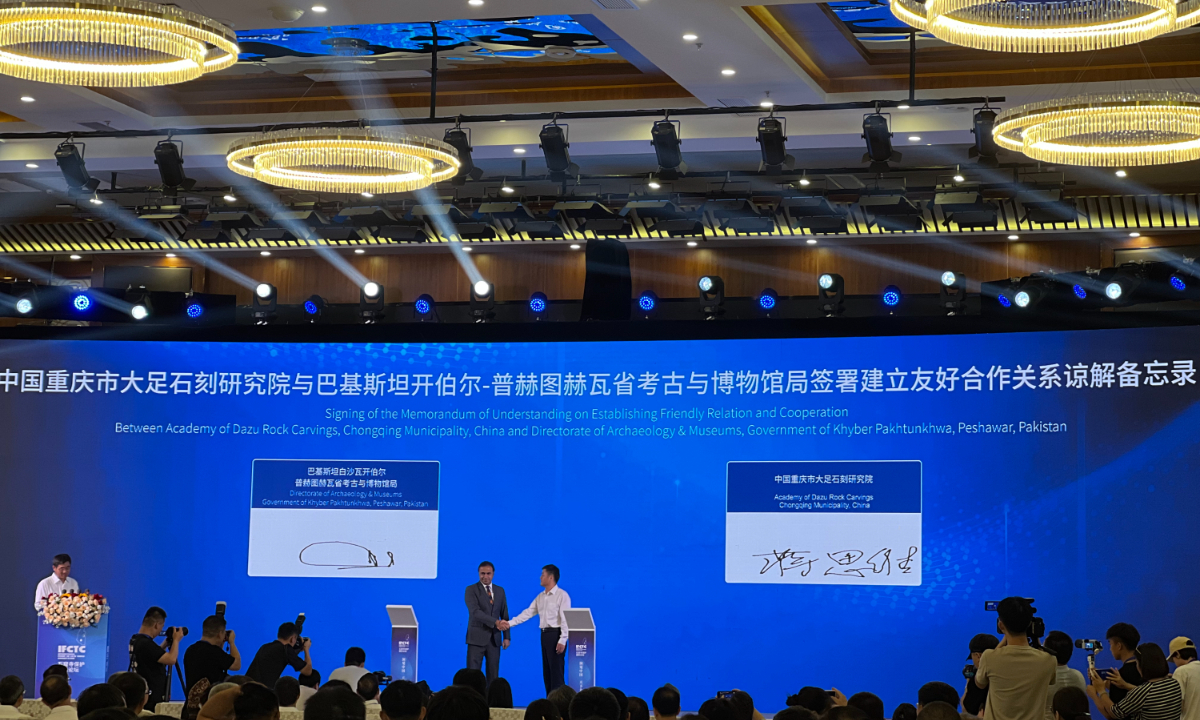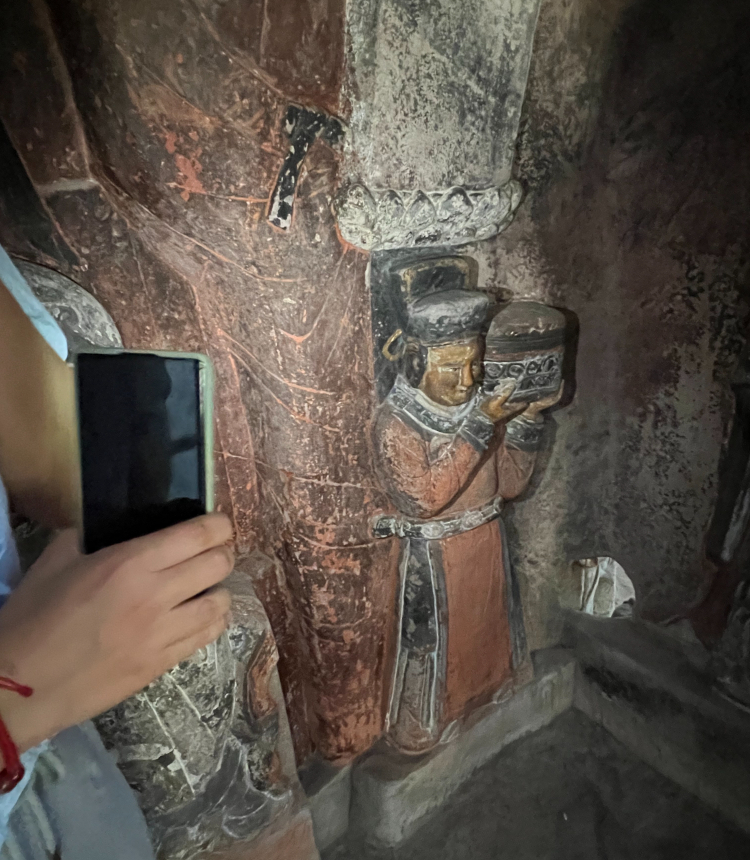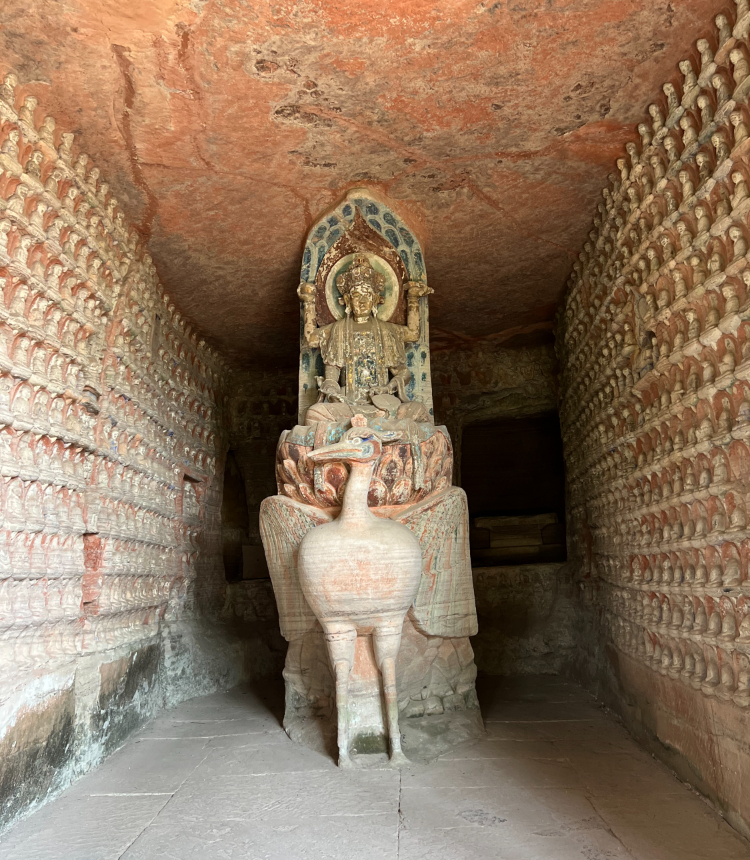Southwest China’s Chongqing Municipality boasts around 100,000 rock carvings that date back to more than a thousand years ago. They are scattered in various corners of the bustling mountainous city, with nearly half of the preserved sites in Dazu, a suburb about 50 kilometers from the city center. The Dazu Rock Carvings were listed as a UNESCO World Cultural Heritage Site in 1999.
“As the only concentrated area of large-scale statues cultural heritage in southwestern China, these grottoes are one of the best examples of integrated Buddhist art in China,” Liu Xiangao, vice director of the Academy of Dazu Rock Carvings, told the Global Times on Saturday. Liu said that these grottoes incorporate Buddhist, Taoist and Confucian elements in China. “Created by the Dazu locals thousands of years ago, the ancient art reflects secularization and localization of religion at that time.”
To better manage, protect and promote international cooperation, the first International Forum on Cave Temple Conservation was launched in Chongqing on Saturday. The event is held in the Baoding Mountains, whose carvings were made during Southern Song Dynasty (1127-1279) are regarded an important part of the Dazu Rock Carvings World Cultural Heritage Site.

Rock cavings in Beishan Mountain, an important part of UNESCO Dazu Rock Cavings World Heritage in Chongqing Photos: Lou Kang/GT
The three-day forum invited experts from home and abroad and those from International Council on Monuments and Site (ICOMOS) to share their experiences in cultural heritage conservation, and to witness the signing of bilateral agreements. The event was especially focused on the core issue of the conservation of this special art: to protect the rock carvings, not only in Chongqing, but also around the world through international cooperation, in the context of intensified climate change.
“Due to the higher sensitivity of the rock carvings and grottoes in regard to the environment compared with other cultural relics, issues regarding climate change has been highlighted years earlier than other cultural relics here in China,” Li Qun, director of the National Cultural Heritage Administration, said during the opening ceremony, stressing that international strength is needed to promote cooperation across the globe as an effective platform to unite worldwide cultural institutes.
“This is the first conference focusing on connections between climate and grotto conservation, and it stresses the key issues considering the climate action,” said Mario Santana Quintero, Secretary-General of ICOMOS.
The Dazu Declaration on Cave Temple Conservation in the Context of Climate Change will also be issued as the forum closes on Monday.

International Forum on Cave Temple Conservation in Chongqing kicks off on August 19 Photo: Lou Kang/GT
MoU promotes understanding
During Saturday’s opening ceremony, the Memorandum of Understanding (MoU) on Establishing Friendly Relation and Cooperation between two institutions, the Academy of Dazu Rock Carvings and Museum of the Government of Khyber Pakhtunkhwa Peshawar, was signed.
Dr. Abdul Samad, director-general of Directorate of Archaeology & Museums, Government of Khyber Pakhtunkhwa Peshawar, who signed the MoU on behalf of Pakistan, told the Global Times on Friday that signing the MoU will benefit a wider group outside the two countries.
“In Pakistan, we have already had a lot of international [culture-related] cooperation experiences, including with Italy, France, Japan. But in China, we have many areas of cooperation covering economic issues, the Belt and Road Initiative as well as cultural exchanges, and we clearly have a brotherly relationship.”
“After my visit to the Dazu Rock Carvings, I think this rock art deserves to be seen by more international tourists, and I also hope that Pakistan can welcome more Chinese visitors.”
Samad further noted that in a small village in Pakistan, similar rock carvings relics are preserved there which resemble to the Dazu Art Carvings in Chongqing. “We have similar protection issues to solve, and we need to cooperate and learn from each other’s experience. This signing is not just a piece of paper, but a general cooperation between two countries,” Samad said.

The rock carvings restoration cooperation project conducted by China and Italy Photo: Lou Kang/GT
Protecting against damage
The Dazu Rock Carvings are a treasure trove for Buddhist, Taoist and Confucian sculptures with paintings that date back to the 7th century. However, these magnificent artworks are under constant threat from natural elements such as water and wind. The Academy of Dazu Rock Carvings, established in 1952, has been working tirelessly to protect and restore the carvings with the help of experts, researchers and international partners.
One of the main challenges facing the rock carvings is water erosion caused by a humid climate, flooding, and underground water. The academy has devised a solution to drain out the excess water before it reaches the grottoes.
“We have carved out a nearly 200-meter-long tunnel at the back beneath those grottoes,” Jiang Siwei, director-general and research librarian at the academy, told the Global Times. He gave the example of Beishan Mountain, one of the main parts of the World Heritage site, where this method has been successfully applied.
Another threat to the rock carvings is fire damage caused by centuries of incense burning by local residents to worship the statues. The grottoes, whose environment is somewhat similar to Angkor Wat in Cambodia, were excavated by local residents since Tang Dynasty (618-907) and even earlier. The lit sandalwood incense remains suggest that the residents here yearned for a better life by entrusting their wishes to the god statue they had built, but the long-term incense burning also caused irreversible damage to the painted paint on the surface of the statues.
To repair the peeling paint on the surface, the academy has collaborated with Italian experts and will cooperate with Japan to restore the statues in some of the caves. A representative told the Global Times that former project, in a suburban cave called Shucheng Rock, is already in the process of closing the case.
As climate change intensifies worldwide, experts believe that more and constant efforts are needed to delay the destruction of these grottoes from the natural environment. The restoration works are not “one for all,” Chen Huili, director of the Protection Engineering Center at the Academy of Dazu Rock Carvings, told the Global Times.
“The restoration works of the rock carving art are a mission of life long,” Chen, who led the Thousand-hand Guanyin Rock Carvings project for over eight years, noted.




